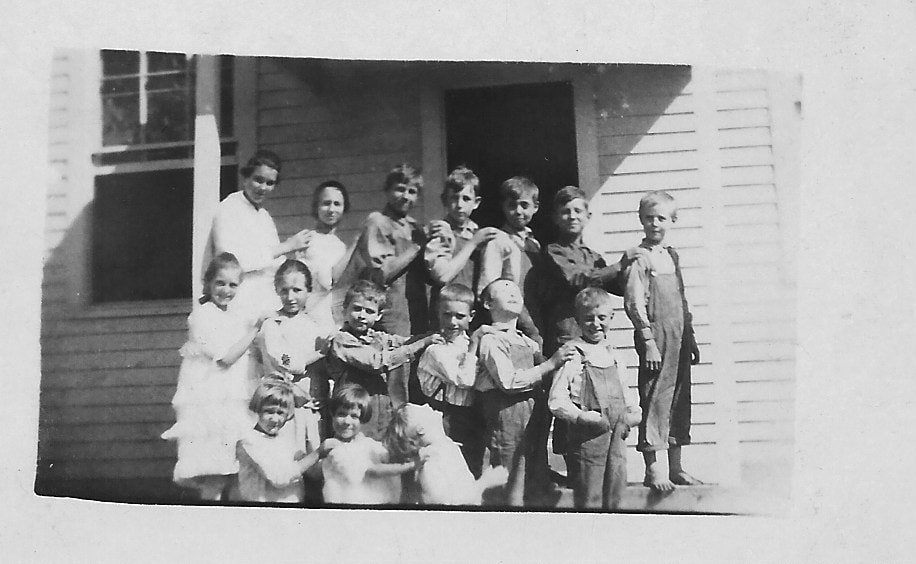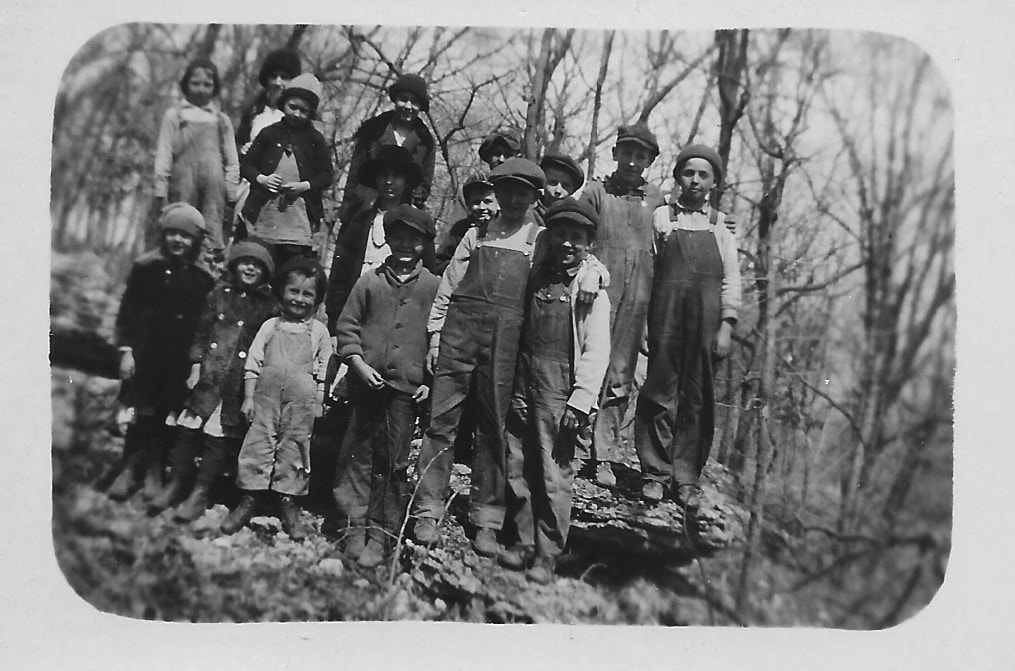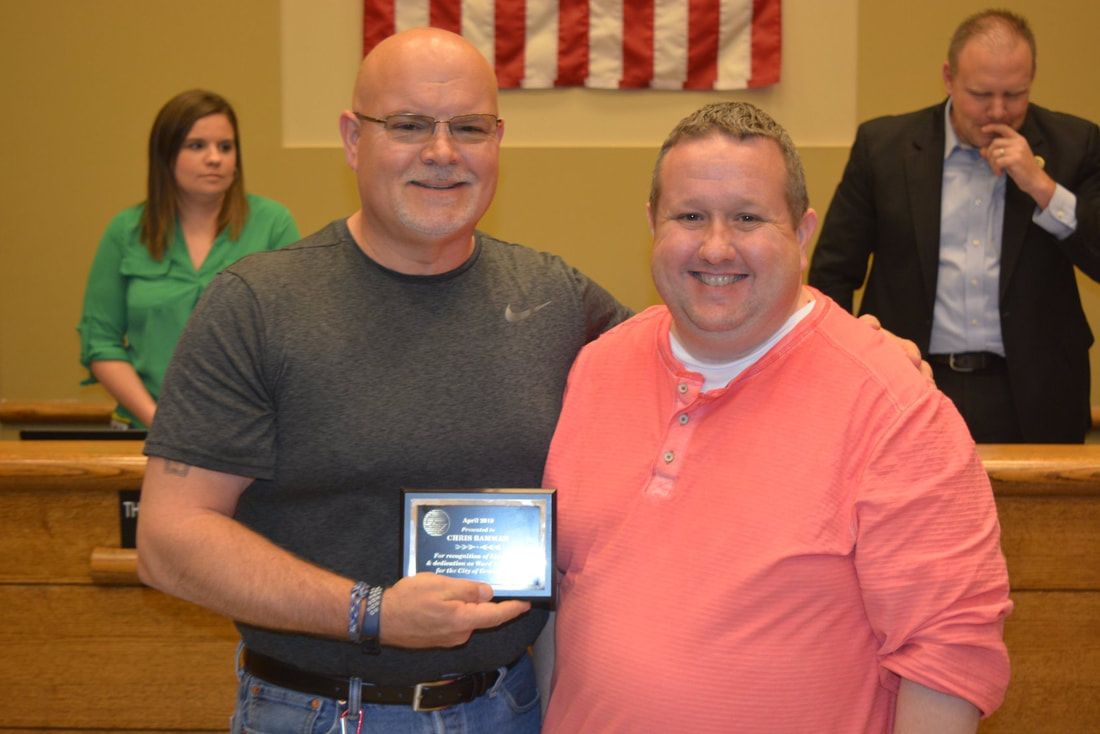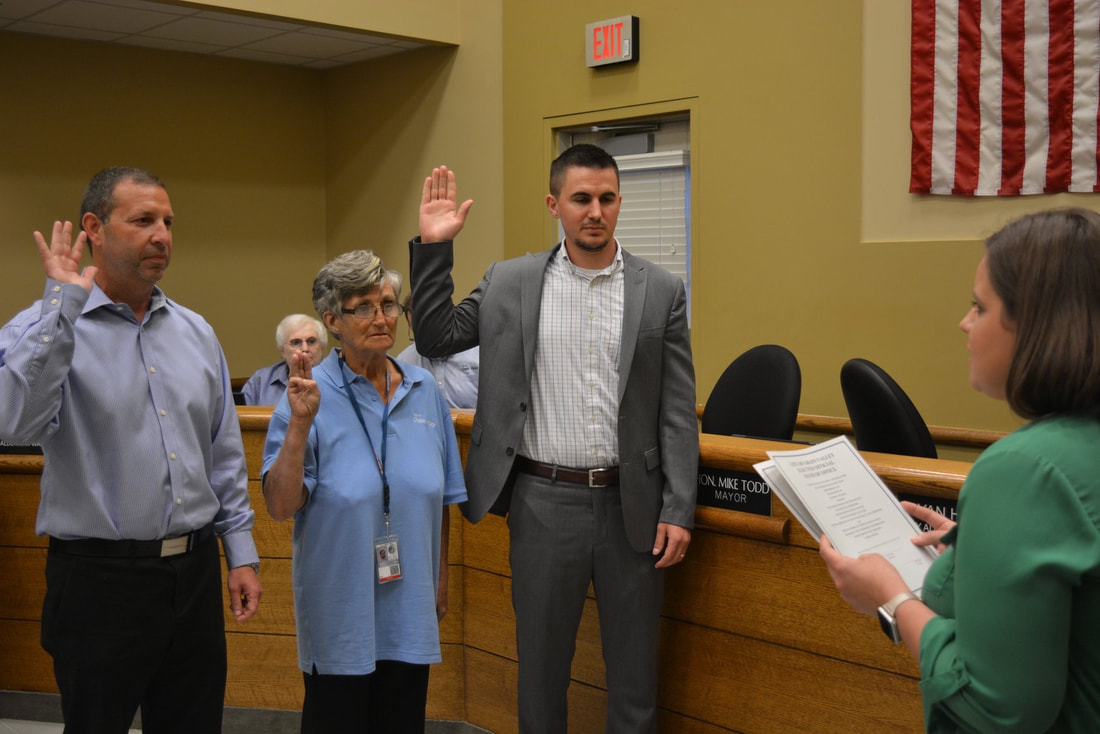|
|
by John Unrein The Kansas City Chiefs continued the facelift of their defense this week with the addition of Defensive End Frank Clark from the Seattle Seahawks. The Chiefs sent the 29th overall pick in the first round of this year’s draft, along with a 2020 second round draft pick (which ever pick ends up being lower of the two second round picks the Chiefs possess; one of which was acquired in the trade of Dee Ford to the 49ers) as well as swapping 3rd round picks (Chiefs gain the 84th overall pick and Seattle gets the 92nd overall pick) with the Seahawks in this year’s draft as compensation for Clark. Clark immediately cashed in with the Chiefs signing a new five-year contract worth $105.5 million with $63.5 million guaranteed according to the National Football League website. Pro Football Focus ranked Clark as the 18th best defensive end in the league last year with an overall score of 77.4. Clark was a Pro Bowl alternate as well last season and solidifies the defensive end position for the organization. Among Clark’s most desirable traits are his get off from the line of scrimmage, the power he possesses in his hands, and the repertoire of pass rush moves he’s assembled for effective use. The latter allowed Clark to compile 13 sacks last year and 35 overall during his career. Not a bad start for Clark who will turn 26 in June and entering his fifth season in the league. The Seahawks applied the franchise tag to Clark this offseason but were at a crossroads of what to do with him. Seattle had to choose who to pay this offseason and next with Russell Wilson receiving an extension and Jarran Reed and Bobby Wagner coming up on free agency. They couldn’t afford to pay everyone and decided to move Clark with only four picks heading into the draft prior to the trade. Clark does not come to his new team with a clean slate off the field. He was arrested and prosecuted for a domestic violence charge in 2014. Clark reached a plea agreement and was convicted of misdemeanor disorderly conduct. Clark issued a public apology to Seahawks reporter Natalie Weiner in 2017 for his alleged comments. Several NFL teams cited prior to him being drafted that he has worked to overcome a difficult upbringing. Clark will be teamed with the likes of fellow defensive lineman Chris Jones, Derrick Nnadi, Xavier Williams, Breeland Speaks, Tanoh Kpassagnon, and Alex Okafor. The Chiefs no doubt hope that this group can replace the production of departed linebackers Justin Houston and Dee Ford. The duo combined for 22 sacks last season. It will be interesting to see who else the Chiefs add in the draft this week to complete the offseason facelift of their defense, as they continue their transformation to the 4-3 under Defensive Coordinator Steve Spagnuolo. iStock photo.
by Wayne Geiger  You’ve probably heard that, as we age, our ears and nose continue to grow. We’re doomed to be perpetual Pinocchio’s. You might have read this information online somewhere, or perhaps, even noticed this strange phenomenon in someone older than you. Or worse, you may have been horrified when looking at some of your old photos and seeing the evidence firsthand. First things first. It’s not true that our noses and ears continue to grow. That’s the good news. The bad news is, our noses and ears do get bigger, or at least appear that way. The culprit is chronology and the powerful pull of gravity. Our ears and nose begin to droop and sag, much like the rest of the body, over time. What a drag. Research has shown that the human ear will droop about .22 millimeters per year—every year. This growth is so precise that it can be used by forensic scientists to figure out the approximate age of a person with amazing accuracy. We take our noses very seriously. The size and shape of the nose has been so extremely important to many people that, for years, rhinoplasty (getting a nose job) was the second most popular type of cosmetic surgery. It shouldn’t take much for you to figure out what was number one. More important than the size and shape of the nose is the power of the nose. No matter the size, humans have quite the smeller. We have roughly 400 types of scent receptors that can detect at least one-trillion different scents. Not bad, unless you compare us to the bloodhound which has about four-billion. But, hey, who wants to have ears that big, anyway? Our ability to smell and distinguish scents is vitally important and incredibly powerful. For one thing, the ability to detect smoke may alert us to the potential danger of fire. We might also decide to have some leftover lasagna in the fridge, but before eating, decide to take a whiff which makes us exclaim, “Gross, I’d better not eat that.” Our nose knows. We’ve also traveled down the road and caught a whiff of a putrid skunk that met his untimely end. In death, as in life, his disgusting scent is a defense mechanism that stands as a stark reminder, “stay back dude or you’ll smell like this for a while.” Instinctively we back away and say, “No thanks. You win.” Even large predators will turn up their nose at the smaller, weaker skunk and move on. The skunk’s main predator attacks from above. The great horned owl and red-tailed hawk will attack a skunk because they have little to no sense of smell. To them, “Tastes like chicken.” Some things smell bad. Some things smell good. Our ability to smell also helps us find friends and potential romance. Although humans are first attracted by sight, smell is a huge part of our decision to extend or end the relationship. Scientists tell us that, subconsciously, we choose potential mates based upon how favorably they smell. The great hair, tone body, and pearly whites will only go so far. A little deodorant or perfume can go a long way. Too much, however, can go the wrong way. Many years ago, one of my employees who worked in marketing talked to me privately about a client that did not wear deodorant. “I’m not sure I can continue meeting with this client,” he said exasperatingly, shriveling his nose, “His smell is just repulsive.” Even that brief description may have made your nose kind of shrivel up a little as well. Not to be nosy, but you’ve probably had a similar exchange or met one of the one in four people who struggles with halitosis. Trying to mask odor or smell attractive goes back thousands of years. Ancient Egyptians used fragrances as a sign of social status. Over time, wearing perfume became more affordable for anyone. In our time, making perfume has evolved into a multi-billion-dollar industry. It is a smelly science. Perfumeries don’t just play guesswork in making their concoctions. They spend billions of dollars a year researching and testing their scents to determine which concoction will attract members of the opposite sex. The goal is not just to “smell good” but to attract. These researchers have found that there are certain formulas and chemicals that will attract a mate. Our sense of smell is also connected to our taste buds. Just this week at a family gathering, we ordered pizza. “Man, that smells good,” my son in law said as the delivery person made her way up the driveway. I inhaled deeply and smelled the golden delicious scent of pizza fresh out of the oven. Like Pavlov’s dog, my mouth began to water. Several things can affect our sense of smell. If we have a cold, an allergy, or are taking medication, for example. In addition, our sense of smell diminishes with age. That’s one reason why older people may use more salt or hot sauce on food or why uncle Wilmer is obsessed with bathing in Aqua Velva and your eyes water during the family reunion. That’s not a problem for Aunt Ethel, because her sense of smell is diminishing as well. One of the most fascinating things about smell is the fact that it is inextricably linked to memory—more than any of the other scents. In other words, a familiar smell will conjure up deep, powerful emotions. This is why some people will keep articles of clothing that belonged to those who have moved or passed in order to “remember” them. They sniff that person’s pillow or shirt and they are transported to a happier time and place. Scents can conjure up unfortunate memories as well. I have often confessed that I am not a huge fan of flowers. As magnificently beautiful as they are, and as wonderful as they smell, they bring up unfortunate memories for me. As a pastor, I been involved in many ceremonies where we have said goodbye to family members and friends as the aroma of florals filled the room. History records that in 1874, when President Andrew Johnson passed, they did not embalm him. When it came time for the funeral, the casket had to be closed and loads of flowers were brought in to mask the obvious. I do believe flowers at memorial services are beautiful and meaningful and I wouldn’t have it any other way. But there are times, in other venues, when the strong scents transport me to relive a painful memory. Smelling also provides humor. I sometimes marvel at my wife who will smell something awful and invite me to join her. “Oh, this is gross,” she’ll say, pulling her face away and shriveling her nose. Then she’ll say playfully, “Smell this!” “Why?” I protest. “If you tell me it smells bad you save me the trouble of having that unpleasant odor too!” On the other hand, I’ll come out of the shower and she’ll say, “You smell good.” “Thanks,” I say, “It’s called soap.” “Soap is good,” she’ll reply with a smile. So, what do we learn? Let me offer five conclusions: 1. Heavy earrings will only intensify the inevitable. Wear them sparingly. 2. Always attack a skunk from above. 3. Use soap. 4. Beauty is in the eyes of the beholder. Longevity is in the sniff of the schnoz. 5. It may be necessary to water down Uncle Wilmer’s Aqua Velva. Wayne Geiger is the Pastor of First Baptist Church Grain Valley, an Adjunct Associate Professor of Speech at Johnson Country Community College, and a freelance writer. by Marcia Napier, Grain Valley Historical Society If you travel south from Grain Valley on Buckner Tarsney Road, just past Ryan Road there is a long hill, known to “old-timers” as Ashcroft Hill. At the apex you can make a left turn onto Oak Hill School Road. The road goes east for a short distance before curving south to end at Nebgen Road. After the Civil War, residents returned to Stony Point only to find most of the village has been destroyed. The school house remained, however it was being used as a temporary home by the Gregg family. The town was relocated about one-half mile west of the original site. Stony Point continued to prosper, and the residents decided a larger school was needed. The district was divided; Stony Point remained on the west side and the Oak Hill District was established on the east side. No records have been found to establish the exact dates for the Oak Hill School, however it seems likely it was begun just prior to 1870. We have a certificate of Approval from the State of Missouri dated April 22, 1924, as well as many photographs. I have not found documentation for when the school closed, however we do have a poster advertising the auction for Oak Hill School along with Stony Point and Round Grove on February 25, 1939. What we do know is the Oak Hill School, located at the curve in the road, provided quality education to students attending there in 1913 and 1914. The following excerpts are taken from an article by John Case, editor of the Missouri Ruralist, dated February 20, 1915. School fairs were held in five Jackson County townships in 1913, and 68 schools took part. Although the season was unfavorable and the agricultural exhibits not nearly so good as they would be ordinarily, seven township fairs were held in 1914, and 77 schools had exhibits entered. Many schools from neighboring counties visited the fairs, and the total attendance was estimated at 9,000. At Oak Grove the first prize for a rural school exhibit was won by Oak Hill School District. Oak Hill had won in 1913 and perhaps the small chaps had crowed about it just a bit more than they really should. Anyway, a winner always has to keep going to repeat, so Oak Hill was warned that it would take some tall hustling to carry off the blue ribbon the second time. They won, but it was no walkaway for other one-room schools had exhibits almost as good. Oak Hill is a typical little school, “out in the sticks” as one of the directors assured me, but it is different. Fewer than twenty pupils are in the district and the oldest is only 15, but every boy and girl had helped in making and gathering the school display. A beautiful quilt, the work of the children, was shown. Boys and girls took part in making that quilt and the blocks bore the names of the makers. Almost every grain and grass that grew in the district was exhibited. A model farm, just little ahead of anything I had ever seen was a feature. A business-like Missouri mule looked through the stable window while nearby the family touring car was entering the garage. The children had made a district census. The acreage of every farm was given; the production of corn and small grain; all the livestock, and even the tabby cats, barring the prowling population) were enumerated. Oak Hill’s population was tabulated, and I will guarantee that here was one census that was accurate. It should not be difficult to convince any person that the rural school children learned many valuable lessons not found in books while they were collecting census data, and growing and selecting things for the township fair. And the love for school and home instilled into the hearts and minds of those youthful citizens is worth most of all. No one could look into the happy faces of those small Oak Hill chaps led by Miss Ona Stephenson, only a girl herself, as they sang the school songs and gave the school yells without catching the spirit and enthusiasm in the air. It was a red-letter day! Visit the Grain Valley Historical Society to see the quilt, the Certificate of Approval, photos and other memorabilia from the Oak Hill School, Next Week: Learn about Murphy School Information on the back of the photos above state “Oak Hill School, 1919”. The photos were taken by the teacher, Goldie Russell. Photos courtesy of the Grain Valley Historical Society Museum, located at 510 Main Street.
Jackson County Public Works Environmental Health Division inspects all restaurants, grocery stores, schools, mobile food and temporary food establishments in the City of Grain Valley. The following violations were reported in the last 30 days:
Whiskey Tango, 401 East South Outer Belt Road Floors around the grill/fryer were dirty. Hood vents had a build-up of dust and grease. All soda gun nozzles at every bar were dirty. Corrected. Nozzles were immediately cleaned and sanitized. Unable to provide copies of valid food handler permits for 7 employees. America’s Best Value Inn, 105 Sunny Lane Dr. No soap provided at handwashing sink. Corrected on site. No towels provided at handwashing sink. Corrected on site. Tops of the cabinet doors has dried spills and residue. Papa Murphy’s, 1203 Buckner Tarsney Road Blade of the can opener had accumulation of food residue. Corrected on site. Dollar General Store, 105 E Rock Creek Lane Dented can of mushrooms found on the shelf on the sales floor. Corrected on site. Can discarded. Bottom shelf in the milk cooler has accumulation of dried milk spills and residue. Grain Valley Marketplace 8, 1131 NE McQuerry Road Residue and debris in cabinet under slushy machine. Missing ceiling tile in theater 7 towards the back row. Boxes of napkins and popcorn buckets stored on floor in dry storage rooms. McDonald’s, 712 N Main No towels at hand sink in dish washing area. Corrected. Employee coffee on box in dry storage area. Corrected. Sonic Drive-In, 706 N Main Dust/debris on ceiling and fan housing of walk-in cooler. Box of single use cups stored on floor in dry storage. Corrected. Price Chopper, 1191 NE McQuerry Road Cups being used as scoops in batter/seasoning. Corrected. Open container of sanitizer in hand sink in kitchen. Corrected. Valley Pub and Patio, 640 NW Yennie St. Stuck on food debris inside microwave in kitchen. Corrected. El Maguey Mexican Restaurant, 102 Buckner Tarsney Road Ice scoop was laying in the ice with the handle touching the ice. Corrected on site. Boxes of food on the floor in the freezer. Corrected on site. Blade to the can opener had build-up of dried food debris. Knives hanging on the clean knife rack had dried food debris. Corrected on site. Lin’s Kitchen, 111 SW Eagles Parkway Wall behind the fryer had an accumulation of grease. Repeat. Vent filters above the grills have accumulation of grease. Repeat. Gaskets on the reach-in cooler have build-up of black residue. Boxes of food on the floor in the walk-in freezer. Gap under the outer back door. Spring cleaning plans this weekend? Two programs on Saturday will help residents safely dispose of household hazardous waste and expired medicines.
Grain Valley residents can safely dispose of household hazardous waste during a collection event on Saturday, April 27th from 8:00am—12:00pm at Pink Hill Park, 2715 NW Park Drive, Blue Springs. The event is free for residents of Grain Valley and other member communities of the Regional HHW Program. The Grain Valley Police Department will also hosts its annual Drug Take Back event in the parking lot of City Hall from 10:00am—2:00pm on Saturday, April 27th.
The Planning and Zoning Commission approved site plans for a Quik Trip during its April 25th meeting. The store will be located at the northwest corner of the 1-70 and Main Street interchange. The projected is expected to be completed in spring 2020.
In an announcement on social media, the City credited the arrival of Quik Trip to the collaborative effort of City administration staff and the Grain Valley Partnership. According to the statement, “this type of economic development, in addition to other recent commercial development announcements, is what will help propel Grain Valley to grow economically and attract additional desirable commercial projects, such as retail and eateries”. Newly elected members of the Board of Aldermen were sworn in and a departing member was recognized during the April 22nd board meeting at City Hall. Ward 1 Alderman Tom Cleaver, Ward 2 Alderman Nancy Totton, and Ward 3 Alderman Shea Bass took the oath of office on April 22nd. Mayor Todd recognized former Alderman Chris Bamman for his service to Ward 1. Bamman served from 2017 – 2019. Mayor Mike Todd and the Board approved the appointment of Judge Susan Watkins to preside over the Grain Valley Municipal Court. Lauber Municipal Law has also been retained by Mayor Todd and the Board of Aldermen to provide the City of Grain Valley with a dedicated City Prosecutor as well as a City Attorney from within their firm. Judge Watkins began practicing law over 30 years ago and has served as municipal judge in Independence for 24 years. Watkins is also the Executive Director of both the Independence and Eastern Jackson County Youth Courts. Youth Court is a peer court system in which juveniles accused of minor offenses are tried, judged, defended, and convicted or exonerated by a court made up of other juveniles. The Grain Valley Municipal Court decides cases including all traffic and City ordinance violations written by the Grain Valley Police Department, Animal Control and Code Enforcement Division. The Board also approved resolutions defining codes of conduct for both the Board of Aldermen in their roles as representatives of the City and for the public during Board of Aldermen meetings. “The purpose of the Elected Officials Guidelines is to define the roles of the Mayor and Board of Aldermen in their everyday interactions with the community and City staff. It serves as a set of guidelines regarding everyday situations that members may encounter. The Guidelines for Citizens Participation help alleviate confusion citizens may have when approaching the Board of Aldermen for the first time during a public meeting and helps make sure the meetings operate as efficiently as possible,” Assistant City Administrator Theresa Osenbaugh said. In other business, the Board also approved a resolution to authorize the City Administrator to enter into an agreement with McCown Gordon Construction LLC to provide construction management services at the proposed municipal complex at the former Sni-A-Bar Farm site. Two firms, JE Dunn and McCown Gordon Construction submitted responses to the City’s Request for Proposal (RFP). McCown Gordon Construction has completed a number of municipal projects similar to the project proposed at Sni-A-Bar and has recently worked on the Grain Valley High School expansion. City inspection staff who have worked with McCown Gordon on that project reported positive interactions with the company, and several municipalities, including Overland Park, Shawnee, and Olathe submitted positive referrals. The budgeted cost for pre-construction services is $122,500. Assistant City Administrator Theresa Osenbaugh administers the oath of office to three newly elected board members on April 22nd. Pictured left to right: Ward 1 Alderman Tom Cleaver, Ward 2 Alderman Nancy Totton, and Ward 3 Alderman Shea Bass. Photo credit: City of Grain Valley
The Jackson County Election Board reported 19,364 votes were cast in a county with 179,308 registered voters. This represents a 10.8% voter turnout in the county. Turnout in Grain Valley was also extremely light.
Voters overwhelmingly approved the Grain Valley School’s $7.5 million bond issue, with 76% of voters giving the green light on a planned addition at Grain Valley North Middle School and other projects around the district. Voters were also asked to vote for two directors to serve on the Grain Valley School Board. Only two candidates, Julie Groff and Michael Hackett, filed and were elected to serve on the board. In Ward 1, Tom Cleaver defeated Dale Arnold 156-141. Incumbent Nancy Totton won the Ward 2 seat with 94 votes. Totton’s opponent Chuck Johnston received 72 votes. Ward 3 Alderman Shea Bass ran unopposed and received 225 votes to retain his seat. |
Categories
All
Archives
July 2024
|
Grain Valley NewsGrain Valley News is a free community news source published weekly online. |
Contact Us |






 RSS Feed
RSS Feed
